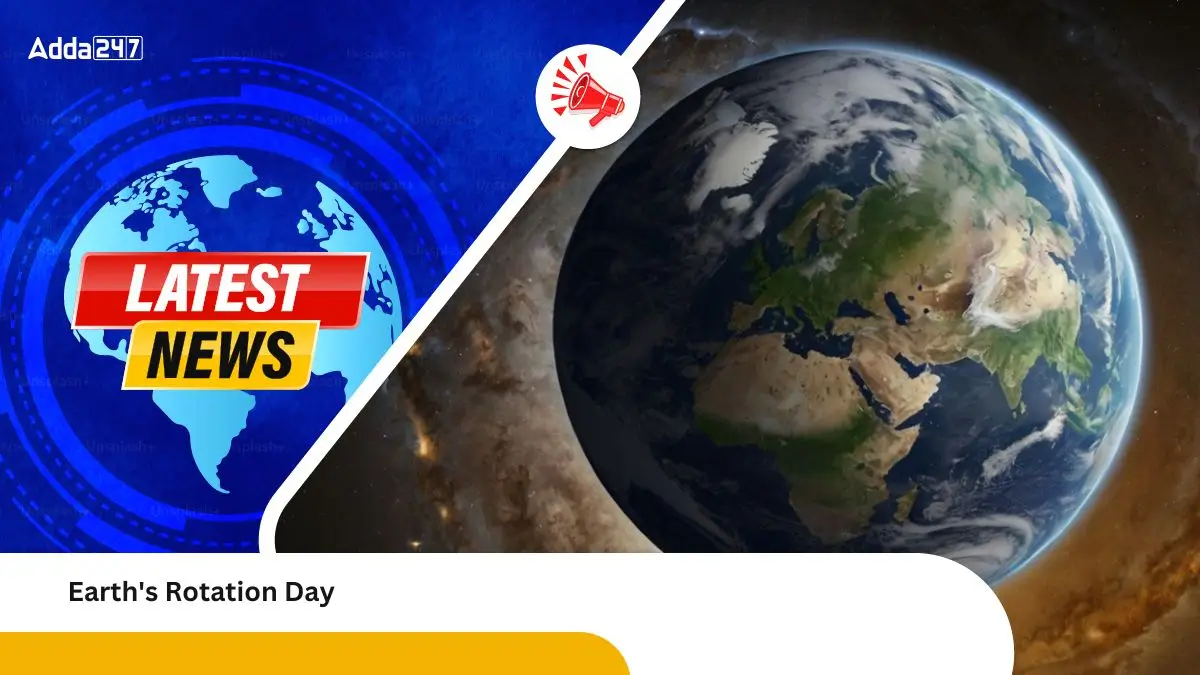Earth’s Rotation Day, observed on January 8, commemorates French physicist Léon Foucault’s 1851 groundbreaking experiment that proved the Earth’s rotation. Using a pendulum, Foucault demonstrated the planet’s spin on its axis, revolutionizing scientific understanding. This day emphasizes scientific curiosity, especially among children, fostering a deeper appreciation for Earth’s dynamic movements.
Key Points
History
- 470 BC: Ancient Greeks proposed Earth’s self-rotation.
- 1851: Léon Foucault conducted his famous pendulum experiment in Paris, conclusively proving Earth’s rotation.
- Demonstration Venues: The experiment was displayed at the Paris Observatory and Greece’s Pantheon and is still featured in science museums worldwide.
Significance
- Promotes scientific curiosity, especially in children.
- Encourages understanding of Earth’s rotation and its role in day-night cycles, seasons, and weather patterns.
- Foucault’s Pendulum remains a popular educational tool in museums.
Facts About Earth’s Rotation
Earth’s Dimension
- Diameter from poles: 12,714 km (7,900 miles).
- Diameter through the equator: 12,756 km (7,926 miles).
Surface Composition
- 70% covered by water; 97% of that is saltwater, 3% is freshwater.
- Planet’s Age: Approximately 4.5 billion years, determined by rock analysis.
ICE Advances
- Latest ice age spanned from 70,000 to 11,500 years ago, peaking 18,000 years ago.
Magnetic Field
- Generated by Earth’s molten iron core, shielding the planet from harmful solar radiation.
NASA Findings on Earth’s Rotation
- Climate change influences Earth’s rotation by redistributing mass due to melting ice, depleted groundwater, and rising sea levels.
- Polar Motion: Earth’s axis has shifted approximately 30 feet (10 meters) in the last 120 years.
- Lengthening Days: The planet’s rotation has slowed slightly, extending the length of days.
Scientific Phenomena
- Coriolis Effect: Deflects air currents
- Northern Hemisphere: Deflected to the right (clockwise).
- Southern Hemisphere: Deflected to the left (anticlockwise).
- Weather Patterns: Trade winds and westerly winds result from the Coriolis Effect.
| Summary/Static | Details |
| Why in the news? | Earth’s Rotation Day 2025 |
| Key Historical Figure | Léon Foucault |
| Significance | Proves Earth’s rotation; fosters scientific curiosity |
| Key Experiment | Foucault’s Pendulum (1851) |
| Earth’s Dimensions | Diameter: 12,714 km (poles); 12,756 km (equator) |
| Surface Composition | 70% water; 97% saltwater, 3% freshwater |
| Planet’s Age | ~4.5 billion years |
| Recent Ice Age | 70,000–11,500 years ago |
| Magnetic Field | Generated by molten iron core, shields from solar radiation |
| NASA Findings | Climate change affects rotation, causes polar motion and lengthening of days |
| Coriolis Effect | Deflects air currents, influencing trade and westerly winds |



 National Energy Conservation Day 2025: M...
National Energy Conservation Day 2025: M...
 International Day Against Colonialism in...
International Day Against Colonialism in...
 International Day of Neutrality (12 Dece...
International Day of Neutrality (12 Dece...







